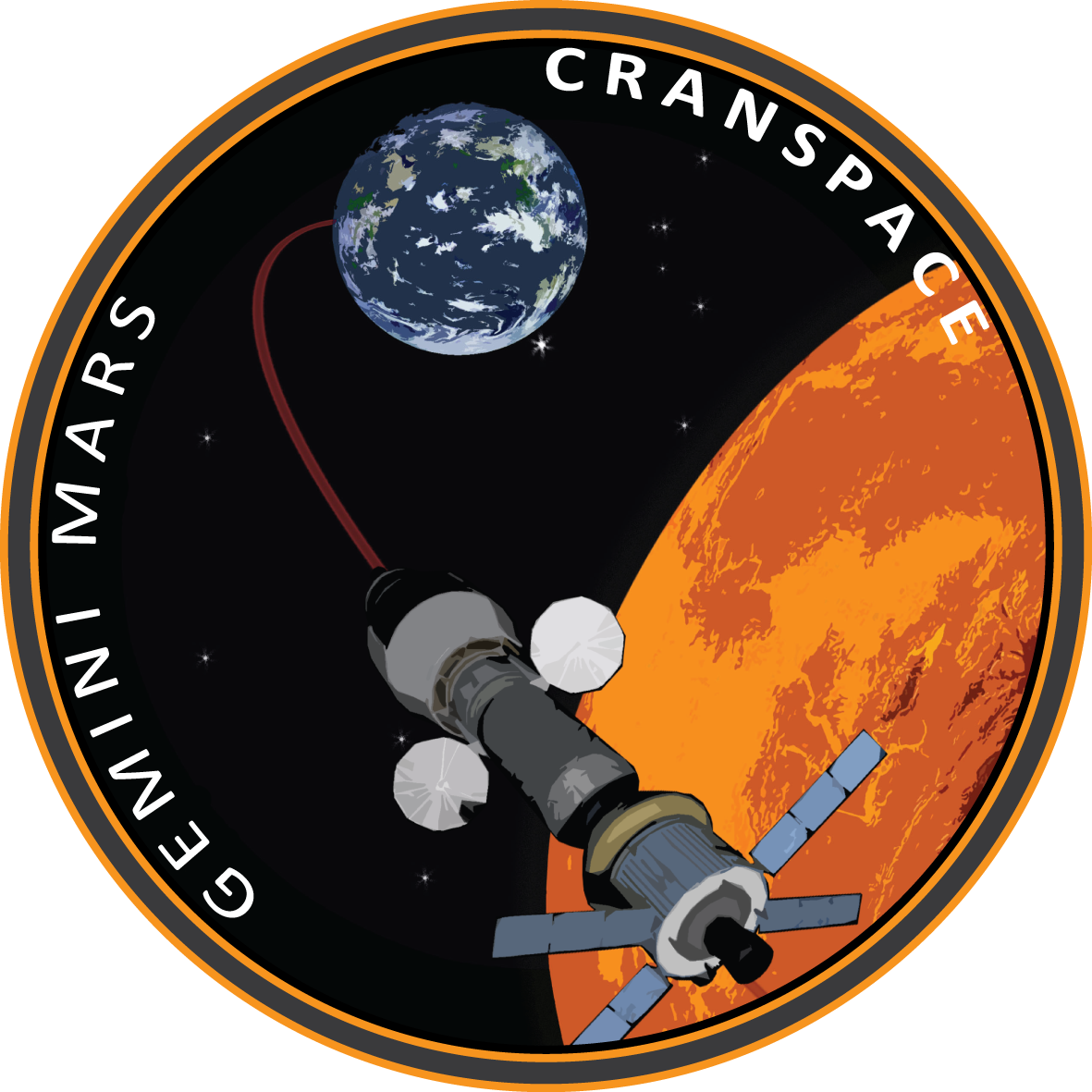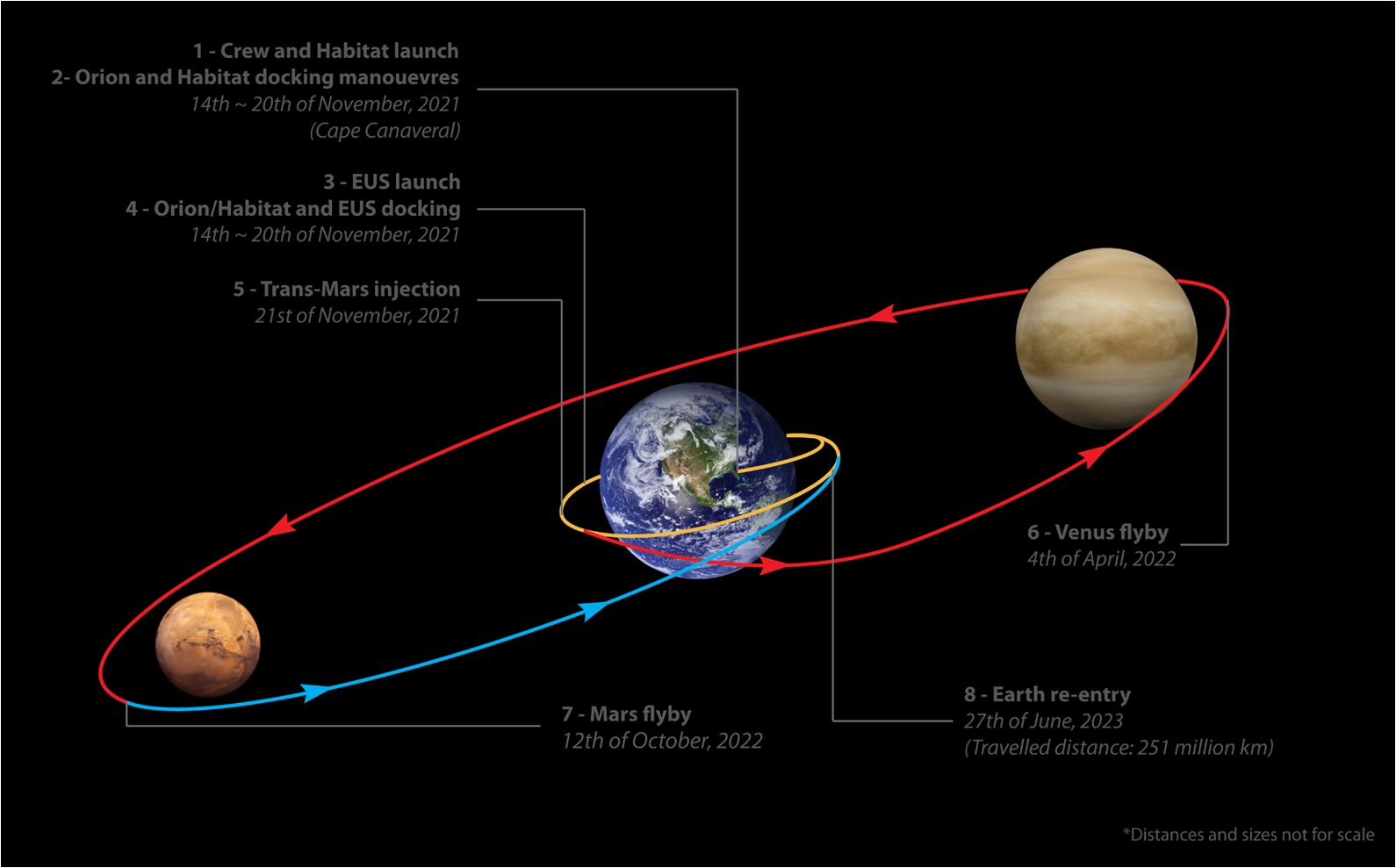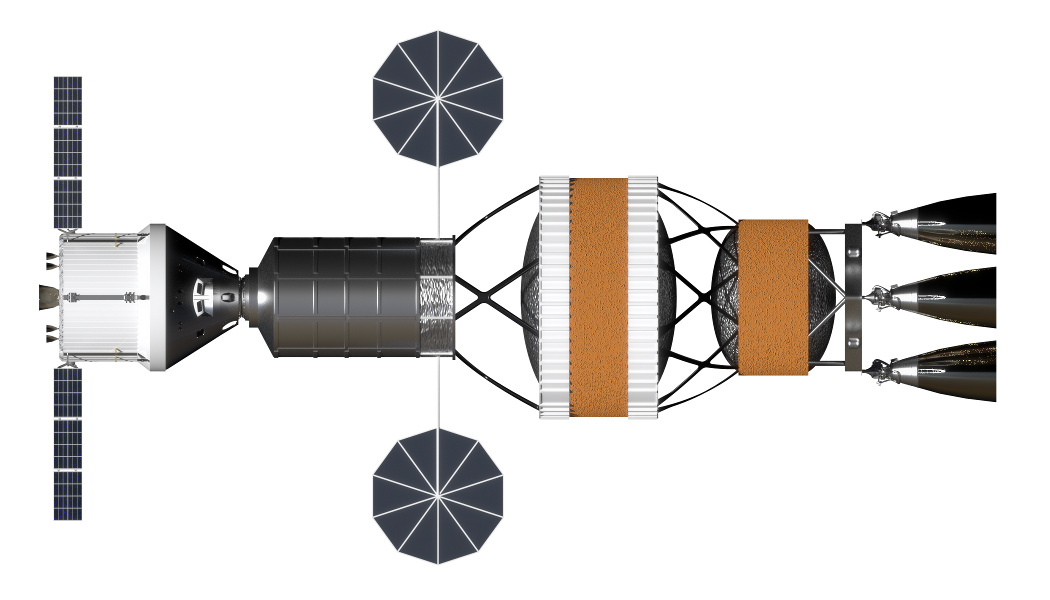


To design a two-person flyby mission to Mars to recapture the imagination of the public and give direction to the U.S. human spaceflight program. The mission will be launched before the end of the 2016 elected president's second term.
The mission will give invaluable knowledge to help improve and define future interplanetary missions in areas including: optical communications, closed loop life support, human biological sciences and human psychology of interplanetary space flight.

Due to the short development time already existing technology was utilized as much as possible for the key aspects of the mission, such as spacecraft configuration, communications and life support. These will however be complemented with experimental technologies which will be a proving ground for later use.

The Orion Capsule was chosen as a direct result of it being designed for interplanetary re-entry. Available for our 2021 launch window the capsule will be re-designed internally to carry two crew members instead of the six it is currently designed to carry. The Orion spacecraft will be used for ferrying the crew to the space habitat, and then returning them to earth.

The MPLM will be the main space habitat module, where the crew will eat, sleep, and work for the duration of the mission. With three previously constructed and with 12 flight-proving missions, there is significant experience in the manufacture and operation of the MPLM, thus increasing the confidence in the design and reducing development costs. The MPLM will need to be modified for interplanetary missions due to its lack of adequate radiation and thermal shielding.







